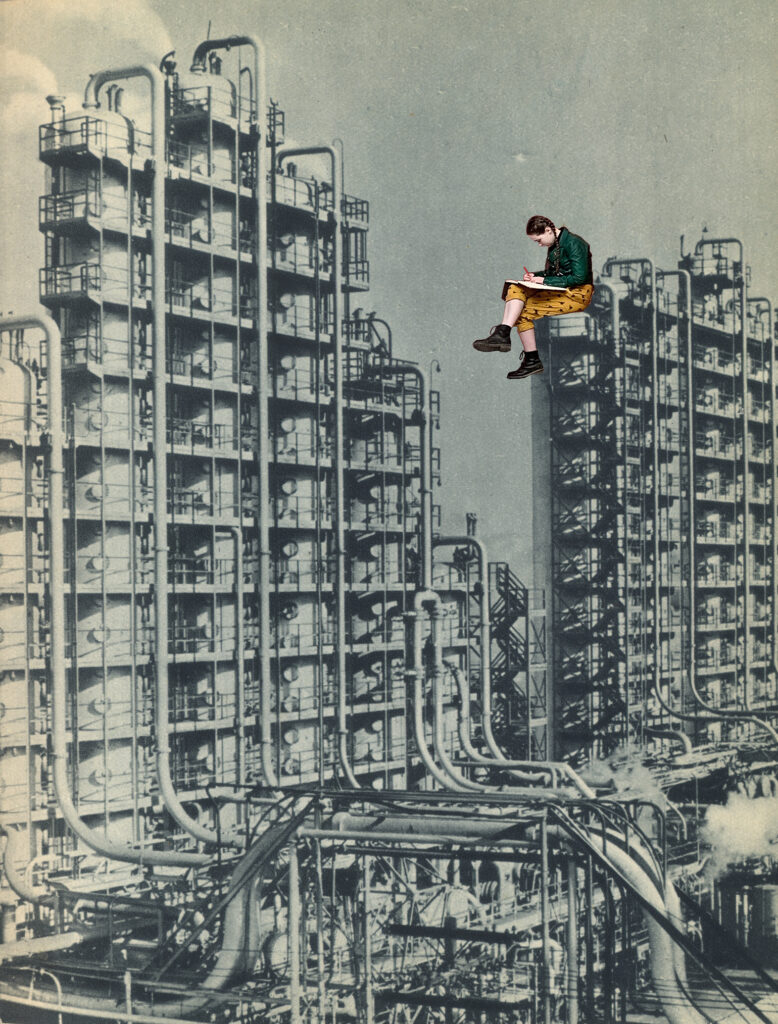The Forever Pollution Project
The Forever Pollution Project is a cross-border and interdisciplinary journalism investigation launched in 2022 to track the PFAS crisis across Europe.
The Project unfolds in two parts: the Map of Forever Pollution (published in February 2023) and the Forever Lobbying Project (in January 2025).
PFAS (per- and polyfluoroalkyl substances) are a family of over 10,000 man-made chemicals developed and widely used since the late 1940s in consumer products and industrial processes and equipment, from toilet paper to gaskets in sulphuric acid production plants.
Their miracle properties, however, have fateful downsides. Their persistence in the environment makes them almost indestructible without human intervention. Once emitted, these toxic “forever chemicals” may remain in the environment for centuries, threatening the health and the economic stability of our societies. Scientists, regulators and civil society agree that PFAS have created the worst pollution crisis humanity has ever faced.
The Forever Lobbying Project

“Reporter” (2022). (Collage: Stéphane Horel)
The Forever Lobbying Project (January 2025) was initiated by Stéphane Horel (Le Monde, France), Luc Martinon (data journalist, France/Germany) and Sarah Pilz (freelancer, Germany) over breakfast in Dortmund, Germany, in September 2023, and kicked off online in January 2024.
For over a year, a team of 46 journalists in 16 countries investigated the lobbying by the PFAS industry and their allied organisations to water down a proposal to ban “forever chemicals” in the European Union (EU), as well as the cost of PFAS remediation and clean-up across Europe.
The investigation revealed for the first time a staggering cost of up to 2 trillion euros over a 20-year period to remediate legacy PFAS and ongoing emissions, with a cost of over 100 billion euros per year after that to keep remediating ongoing emissions if they are not restricted.
The team also submitted the key arguments deployed by plastics lobbyists to a stress test, which showed that most arguments are scaremongering, false, misleading, or potentially dishonest. In brief: it is straight out of the corporate disinformation playbook.
The investigation built upon the concept of expert-reviewed journalism, by facilitating a collaboration with 18 international academics and lawyers. The team developed the lobbying methodology with Gary Fooks (University of Bristol, UK) and the cost methodology with Ali Ling (University of St. Thomas School of Engineering, United States) and Hans Peter Arp (Norwegian University of Science and Technology and Norwegian Geotechnical Institute).
The work was based on over 14,000 previously unpublished documents. The majority originates from 184 freedom of information requests, 66 of which were shared with the team by EU lobby watchdog Corporate Europe Observatory, who produced their own in-depth report.
The Forever Pollution Project document collection is the largest in the world on the topic. All documents are available to the public at both the Industry Document Library of the University of California, San Francisco (home to the famous ‘tobacco papers’) and the Toxic Docs database of Columbia University and the City University of New York.
This page links to the publications of the Forever Lobbying Project.
Awards
- Helen Darbishire award, 2025.
- Daphne Caruana Galizia Prize for Journalism of the European Parliament, finalist, 2025.
Funding
The project received financial support from the Pulitzer Center, the Broad Reach Foundation, Journalismfund Europe, and IJ4EU.
Arena for Journalism in Europe is financed via its own income and a diverse group of funders and provided in-kind support (team, website, etc.).
The Forever Pollution Project

Remediated Landscape #2 (2024). Collage: Stéphane Horel.
The award-winning Forever Pollution Project (February 2023) was initiated by Tim Luimes (The Investigative Desk, Netherlands) in late 2021 and started with a core team of five journalists based in five countries with PFAS manufacturing facilities (Belgium, France, Germany, Italy, and the Netherlands). In the autumn of 2022, Arena for Journalism in Europe helped scale the team across Europe, raising the number of partners to 29 journalists in 12 countries.
The Project’s Map of Forever Pollution revealed the extent of PFAS contamination across Europe and located for the first time 23,000 contaminated sites and 21,500 presumptive contamination sites due to current or past industrial activity.
The mapping methodology was adapted and developed by Stéphane Horel (Le Monde) with seven experts in social science and environmental chemistry, initiating an exciting ‘expert-reviewed’ journalism experience.
The Map has had a major impact in the political discussion both at the EU and national levels, and the journalists’ research has been featured in journalistic, scientific and regulatory conferences. The Map data have been used in more than a dozen research projects and have since been taken over by the National Centre for Scientific Research (CNRS) to create the PFAS data Hub.
As a conclusion to this experimental journalism adventure, based on the model of peer-reviewed scientific work, the Mapping methodology was published in the form of an article in the scientific journal Environmental Science & Technology, under the title “PFAS Contamination in Europe: Generating Knowledge and Mapping Known and Likely Contamination with ‘Expert-Reviewed’ Journalism”.
This page links to the 80 publications of the Forever Pollution Project.
Awards
- Kevin Carmody Award for Outstanding Investigative Reporting, Large, 2nd place, Society of Environmental Journalists (SEJ) 22nd Annual Awards for Reporting on the Environment, 2023.
- Daphne Caruana Galizia Prize for Journalism of the European Parliament, 3rd finalist, 2023.
- Nominated for the IJ4EU Impact Award, 2024.
- Louise Weiss prize for European journalism, France, 2024.
- Stéphane Horel won the awards of both French and European Science Journalist of the Year, 2023.
- SZ/NDR/WDR was nominated for the German Reporter Award in the category of Data Journalism, 2023.
- Watershed/The Guardian Highly commended at the British Journalism Awards, category Energy & Environment Journalism, 2023.
Funding
Members of the core team obtained financial support from Journalismfund.eu and IJ4EU.
Arena for Journalism in Europe is financed via its own income and a diverse group of funders.
